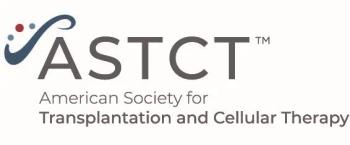
Supportive Care in Multiple Myeloma Focuses on Bones and Infection
Helping patients through toxicities and discomfort from multiple myeloma and its therapies remains a challenge and must be addressed with supportive care practices.
New therapies for multiple myeloma (MM) have proliferated in recent years, with four newly approved agents in 2015 alone. Though this is obviously an important step in improving outcomes with this malignancy, helping patients through toxicities and discomfort from this disease and those therapies remains a challenge.
“Supportive care is about keeping all the pieces together,” said Kathleen Colson, RN, BSN, of Dana-Farber Cancer Institute in Boston, during the 11th Annual National Comprehensive Cancer Network (NCCN) Hematologic Malignancies Congress, held September 30–October 1 in New York. “We see a very promising future, though there is still a lot of work to be done. We see side effects [with the new agents] that are different from older therapies.”
With good supportive care practices, Colson said that the increased survival seen with better therapies can be accompanied by improved quality of life. The first set of considerations for supportive care involves the broad spectrum of clinical manifestations that can accompany MM, both before treatment begins and afterward.
About 30% of MM patients present with renal compromise, and 33% present with some degree of peripheral neuropathy, Colson said. Infection can be present in 15% of patients, thanks to the immune deficiency inherent to the malignancy. The most common hematologic complication is anemia, occurring in about 70% of patients.
That high rate of anemia is due to MM’s infiltration into the bone marrow, which is also responsible for very common and often severe bone problems. “Abnormal plasma cells inhibit the osteoblasts from doing their job in building up bone,” Colson said, causing bone destruction throughout the skeletal system. More than 75% of patients will present with bone pain, and 70% have lytic lesions. The most common areas of bone involvement include the long and flat bones where bone marrow production is greatest.
Supportive measures regarding these bone issues can include vertebroplasty or balloon kyphoplasty, which can alleviate the pain associated with bone problems. Bisphosphonates are also commonly used, as they inhibit bone destruction. Patients should be monitored for osteonecrosis of the jaw, Colson said.
For renal dysfunction, supportive therapy is again very important. Nonsteroidal anti-inflammatory drugs should be avoided, and IV contrast dye can lead to renal failure. Patients should be made aware of this, in case of any CT scans or other procedures requiring contrast dye; oral contrast dye does not carry the same risk.
Hydration is also key for MM patients with kidney dysfunction, Colson said. “If a patient goes into renal failure, we can save the patient’s kidneys, we can turn that around with appropriate treatment,” she said.
The compromised immune system in MM is particularly important. “MM patients have a 15-fold increased risk of infection,” Colson said. “The majority of patients with MM will end up dying from an infection and not from their disease. A simple cold…can progress to an upper respiratory infection, which can progress to pneumonia, which could lead to death.” In patients that have recurrent infections, gamma globulin can be administered to offer a boost to the immune system.
When it comes to some of the newer therapies, infusion-related reactions are an important adverse event to monitor, Colson said. With drugs such as daratumumab, patients must be fairly heavily pretreated with steroids and other medications, “and we just have to keep an eye on these reactions,” she said. “It has been astounding what we have seen for progress in treatment of MM, and we all know that this translates to increased overall survival and better quality of life. But most importantly, it gives hope to the patients and to their families.”
Newsletter
Stay up to date on recent advances in the multidisciplinary approach to cancer.

















































































